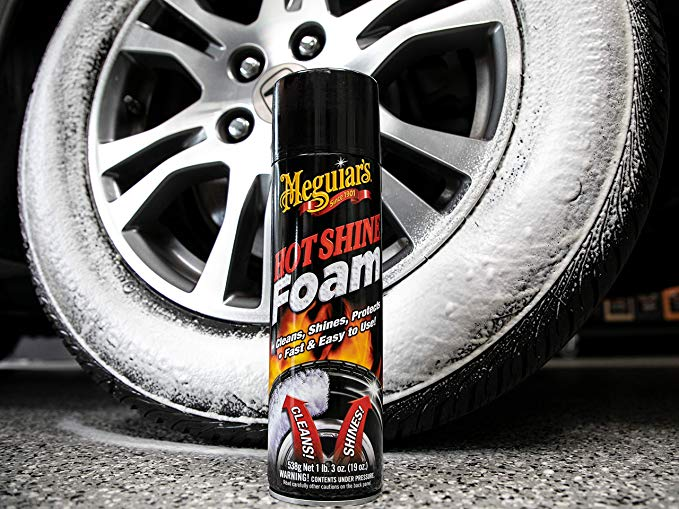NASCAR may have been founded around moonshine, but those early days of running “white lightning” are long gone. Nowadays, auto enthusiasts prefer to run a different kind of shine, and unlike those hot-rodding bootleggers, this stuff won’t force you to run from the fuzz.
Homemade DIY alternatives are as numerous as crashes at Talladega, and nowhere is this more apparent than in the world of car detailing, with liquid car detailing solutions leading the pack. So is it possible to concoct homemade tire shine with a bunch of random ingredients you’ve got lying around the house? It’s not like you have to worry about a peeling clear coat or hard water spots when caring for tires. So why not get play “mad scientist,” and mix-up a potent shine of some sort?
Now before we get too “antsy in the pantsy” over talking tire shine, let’s get one thing straight: There’s a reason why the tire dressing business is so fucking profitable. For decades, the world’s wealthiest chemical companies have spent an asinine amount of cheddar on researching and testing tire shine products, just to guarantee that they work.
That being said, please don’t get all hot under the collar when your homemade tire shine solution isn’t lasting nearly as long, or bringing the thunder like a $1 billion dollar investment from 3M. You are here because your cheap ass is trying to make due with what you’ve got, and you’re curious to see if all those post-apocalyptic survival supplies you’ve been hording in your auntie’s garage will cut the kimchi.
Well fear not good citizen! The following three, relatively decent, super simple homemade tire shine recipes are here to make your quest for frugality a reality. While we’re at it, I guess we might as well address some of the common issues associated with homemade solutions of this caliber, and maybe even throw in a brief FAQ section, just for shits-and-giggles. Onwards!
3 of the Best Homemade DIY Tire Shine Solutions
While a lot of people have their own homemade tire shine recipe (tortoise saliva and turpentine anyone?), the following three oddball entries are generally accepted as the best, and safest solutions. However, just to err on the side of caution, we strongly suggest using protective gear such as nitrile gloves and eye protection when concocting an automotive “tincture” on one’s own. The last thing we want is for you to end up in the hospital because you just discovered that you are allergic to any combination of the following ingredients.
However, just to err on the side of caution, we strongly suggest using protective gear such as nitrile gloves and eye protection when concocting an automotive “tincture” on one’s own. The last thing we want is for you to end up in the hospital because you just discovered that you are allergic to any combination of the following ingredients.
It may sound like a frilly Hipster highball, but when you combine castor oil and alcohol with a little auto shampoo and water, the natural shine of the rubber and synthetic materials contained within modern tire compounds really pops. Here is what you’ll need to make this oddball “cocktail.”
To whip-up this magical mixture, you’ll first blend the automotive shampoo and water to wash the tire.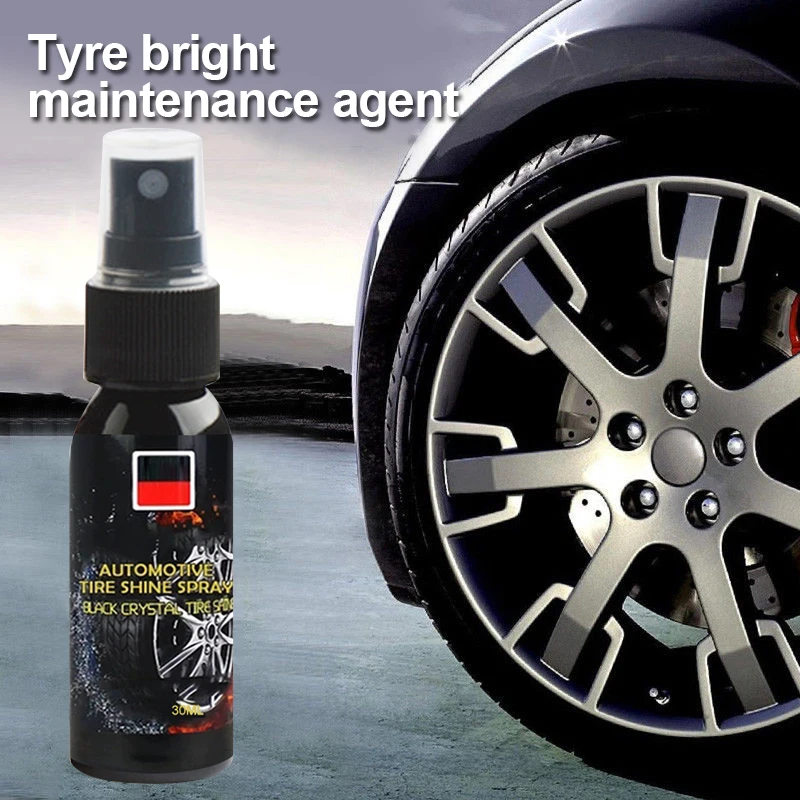 Use a tire brush to get into all of those little grooves and textured surfaces on the outer sidewall.
Use a tire brush to get into all of those little grooves and textured surfaces on the outer sidewall.
After scrubbing the rubber, use some rubbing alcohol to further clean the tire. The alcohol essentially acts as an extra step to further remove contaminants from the tire’s sidewall, and should be used sparingly, as it can dry out rubber rather quickly. A modest splash of rubbing alcohol on a microfiber towel or applicator pad will be all that is needed to wipe the entire tire clean.
Once the tire has dried, splash some castor oil on a different microfiber towel or applicator pad, and hit every square centimeter of the tire’s sidewall in a circular motion until a sheen can be seen from every angle.
Out of all of the products on today’s list of homemade tire shine formulas, baby oil has to be the cheapest and slipperiest. Not only does this slick mineral and aloe-based oil add insane amounts of shine to anything it touches, but the infusion of Vitamin E has caused it to become prized for its ability to nourish cracked and drying surfaces, and that includes automotive rubber.
Here is what you’ll need:
First, pour the 1/2 cup of water into a bucket, add the baby oil, and mix with three drops of automotive shampoo. Pour the solution into a spray bottle and shake it up. Spray the homemade tire shine directly onto the tire , as well as onto a clean microfiber towel. Once the tire is completely covered and slick-looking, allow the solution to sit for a minute or two before wiping it away with a separate microfiber cloth.
While the smell of burning rubber may excite fans of drag racing, most people abhor this pungent automotive aroma. Try laying a citrusy smackdown on UV damage and cruddy contaminants with the dry-rot-reducing power of a lemon oil tire dressing solution. When blended properly, this concoction acts as both cleaner and conditioner.
Try laying a citrusy smackdown on UV damage and cruddy contaminants with the dry-rot-reducing power of a lemon oil tire dressing solution. When blended properly, this concoction acts as both cleaner and conditioner.
First, pour the automotive shampoo into a bucket and then add the water along with the Borax. Stir the concoction until fully mixed, adding the lemon oil last. Once fully blended, dip the brush in the solution and clean the tire, reapplying fresh amounts of solution as necessary. Rubber thoroughly scrubbed, break out a clean microfiber towel and conduct a final, dry wipe down.
A Few Other “Unique” Homemade Tire Shine OptionsNaturally, there are a ton of other homemade tire shine options out there, most of which rely upon common household products. The issue, is that from a shiny tire’s viewpoint, most of these ingredients really aren’t all that great when it comes to durability and visual appeal. So take the attached video with a glob of grease, because the aforementioned DIY tire shine solutions are about as good as it gets.
The issue, is that from a shiny tire’s viewpoint, most of these ingredients really aren’t all that great when it comes to durability and visual appeal. So take the attached video with a glob of grease, because the aforementioned DIY tire shine solutions are about as good as it gets.
In order to help you remember the core components of routine tire care, we suggest following the classic T.I.R.E. acronym, for it still rings true today. This will not only help keep those sidewalls looking spiffy, but potentially prolong the life of the tire compounds themselves, and therefore make your windshield time all the more safe.
“T” is for TIDYThe easiest way for someone to keep their tires in good shape, is to clean them regularly.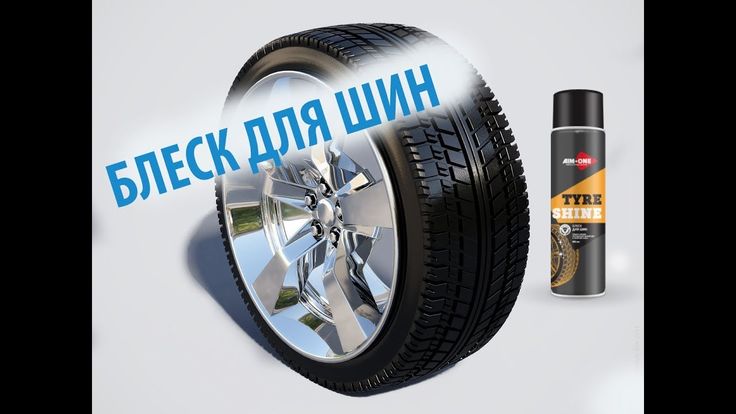 Washing away tire contaminants like grime, brake dust, pollution, and road salt helps remove the risk of this crud embedding into the rubber.
Washing away tire contaminants like grime, brake dust, pollution, and road salt helps remove the risk of this crud embedding into the rubber.
By keeping your tires tidy, and routinely applying a protectant, contaminants and UV rays alike become far less of an issue, as both are the core cause behind premature cracking and blowouts.
“I” is for INSPECT The old “penny test” may be a proven method for testing tread depth, but on many tire compounds this means you have reached a dangerously low level of grip. The top of Lincoln’s head on the US penny measures about 2/32nd’s of an inch, which traditionally means it’s time to replace a tire. Don’t wait until your tires reach this level, because your traction at this point will likely border on being dangerous.Automotive tires should undergo monthly maintenance checks, especially when routinely driven. This includes checking tire pressure levels, which should be done every other week, especially since these numbers fluctuate when there are dramatic changes in ambient air temperature.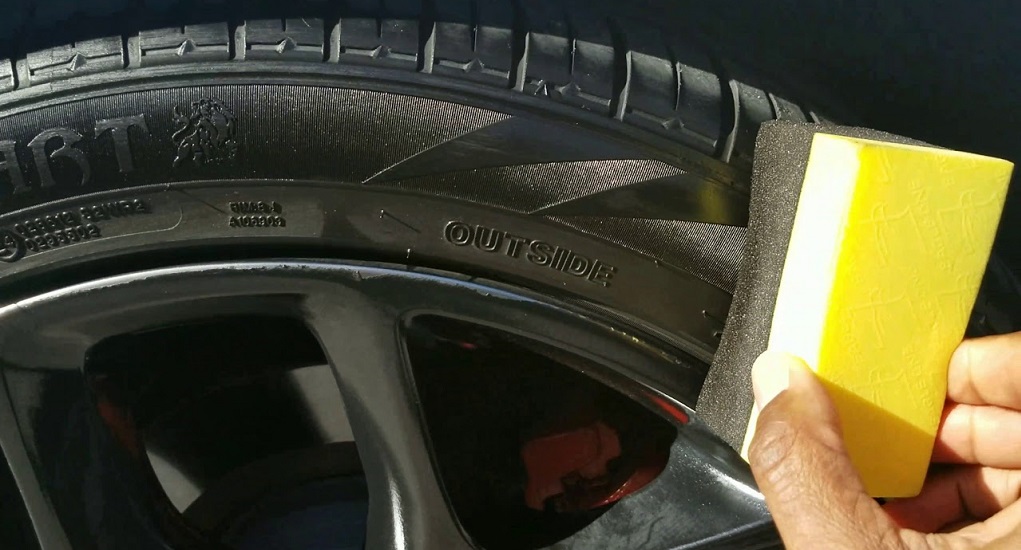
Inspecting tires for cracks, bubbles, or odd wear patterns should also be a routine, with a monthly, or bi-monthly basis being the norm. This will not only help you keep an eye on the condition of the tire compounds themselves, but by detecting uneven or unusual treadwear patterns, you will shine a spotlight on any suspension alignment issues. There is also the issue of improper tire inflation, which can lead to premature wear and potential blowouts.
“R” is for REPLACEMany car owners assume that if there is more than 2/32nd tread depth left on a tire, they’ll be totally fine. This is one of those outdated, shade-tree mechanic recommendations. By the time a tire’s tread pattern has worn this low, traction will have been reduced to a dangerously low point. Play it safe, and replace your tires when the rubber reaches Lincoln’s forehead on the US penny.
“E” is for EASY For those of you who are unfamiliar with tire lingo, this guide will help explain what all the numbers and letters on the sidewall of a tire means.
Having the right tires on your vehicle is just as crucial as routinely inspecting and maintaining them with a tire dressing cleaner. Keeping an adequate load weight, and not exceeding the tire’s maximum capacity is a core way to maintain tire integrity, as is ordering the appropriate tire size.
Overloading a vehicle, or specific areas of a vehicle (like the trunk or truck bed), puts a ton of strain on tires, as every tire compound on the planet comes pre-engineered to withstand a certain amount of pressure. So shop wisely, and know that any tires with the letters “XL” on their sidewall won’t be “extra large,” but strong enough to hold extra air, thus allowing them to carry “extra loads.”
Quick Tip: Don’t forget to check your spare tire every month. Nothing is worse than having a flat tire, and realizing that the doughnut is also low on air or damaged in some way.
Parting ShotsDry rotting tires or tire sidewall cracks are a commonplace, and often avoidable tire malady.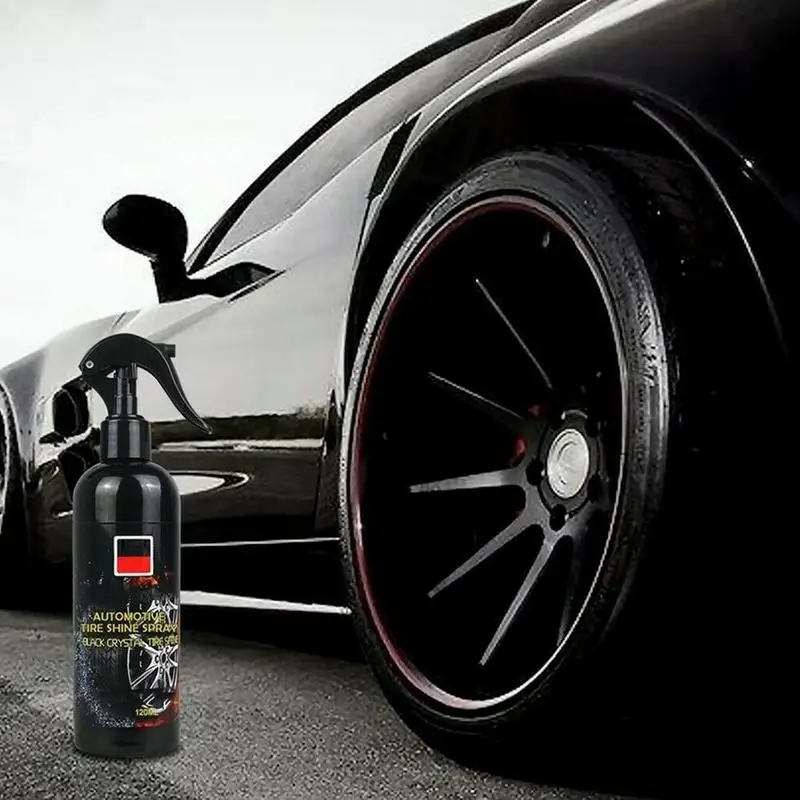 If your tires look like this it is time to replace them ASAP.
If your tires look like this it is time to replace them ASAP.While these homemade tire shine solutions are rather good at improving appearances and protecting sidewalls, extending longevity really boils down to protection, not enhancement. That is why the lemon oil shine option remains the preferred homemade method for accomplishing this vital step.
Just remember, automotive tire care is more than just applying a product or some homemade solution to a piece of rubber. In order to safely enjoy the joys of the open road, one must first inspect and then protect their tires. This rubberized consumable product is the only part of the vehicle that comes into contact with the ground. So take good care of these rolling pieces of rubber, and they will take care of you…
Daily travel and long road trips can make the tires black and shiny go dull and gray in no time. Car fans know that untreated and sloppy tires can trigger risk in driving, whereas grey and faded tires compromise the presentation of your amazing vehicle.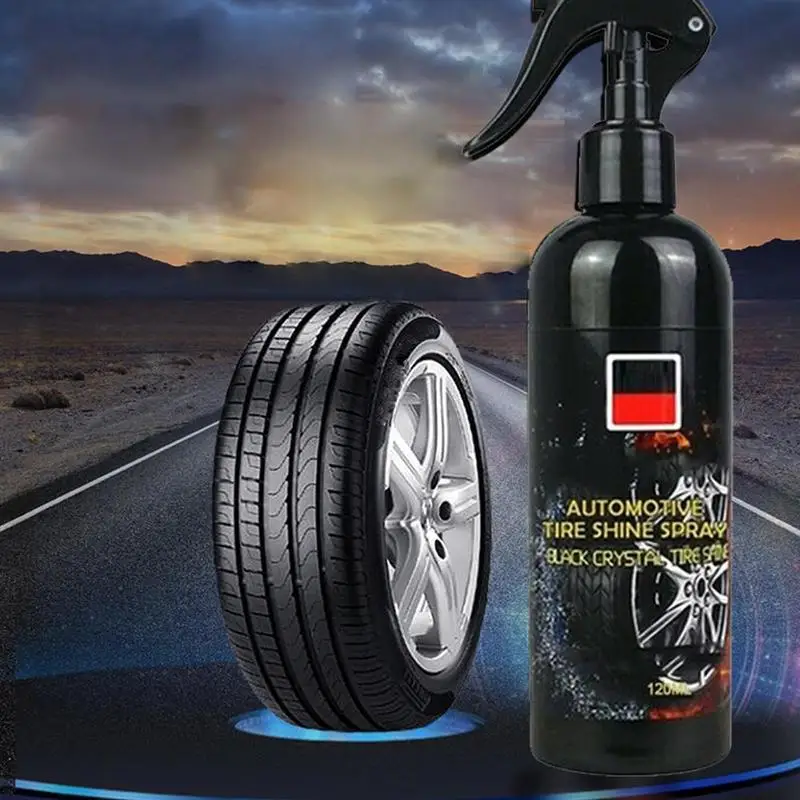
Here in this article, we will address how you can make your tires black again without changing them.
Page Contents
Tires remain in friction with the road while driving. This friction causes discoloration, cracking and makes the tire lose its spikes. In contrast, the tire’s rubber material loses its elasticity, resulting in the tire losing its durability to friction.
Making tires black means taking routine care of your tire, which also comes with technical benefits. Such as;
Worn-out tires not only look bad, but they also compromise the presentation of your vehicle.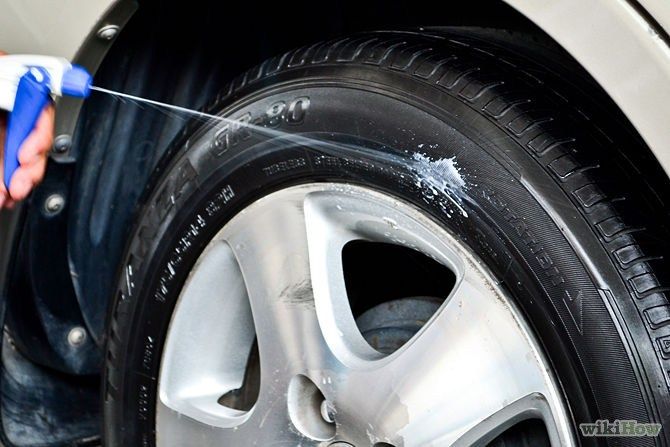 Not only that, but it can be life-threatening for the driver as they lose their grip over some time.
Not only that, but it can be life-threatening for the driver as they lose their grip over some time.
Read on to know more because, in today’s DIY tips, you can become a pro at how to make tires black again!
Things to make tires black again – What will you need to follow this tutorial?Here is a shortlist of what things you need to make your tires brand-new.
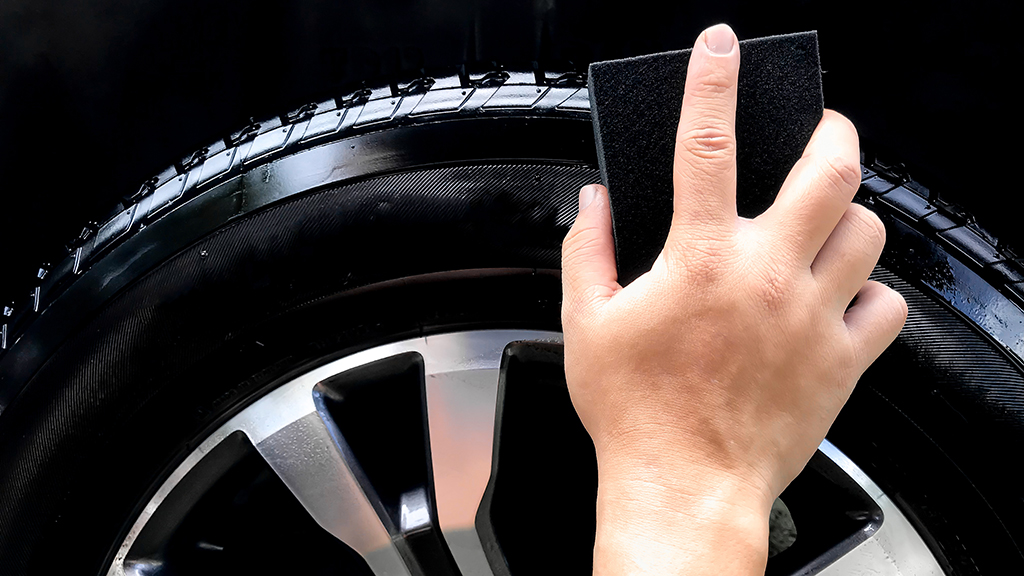
Thus, it is crucial to be equipped with the proper knowledge and products to make the tires black the right way!
Browsing through the internet about easy-to-use products, you can make the tires black again without much hassle. Here are the steps that you should follow while making your tires black.
1. First things first, clean up the tire.Nothing, no product or polish will make the tires black unless the dirt-cakes sitting on the tires are cleaned first. The rim, wheels, grooves, every nook, and cranny of the tire should be cleaned using high-power water sprays (special nozzles).
You can also use a hose to clean up the dirt from the tires, as it ensures a high-pressure water supply, so the dirt, dust, and grime go away instantly.
You can also use dish soap as a tire cleaner to ensure effective cleaning. Many people tend to use a scrub brush to clean between the grooves; however, it is not recommended to damage the tires. Look out for microfiber towels instead.
2. Let the tires dryOnce thoroughly cleaned, let each tire dry so that the tire dressing or blackening agents gets uniformly applied on the tire’s evened-out surface.
**Pro tip: Before you apply the tire blackener, coat the tires with a gel or tire balm after cleaning and drying, it will act as a liner/protection and enhance the durability of the blackening agent. Just make sure that you dry the tire again.**
3. Time for a tire dressing or, as you may call it, a tire blackenerFrom oils to water-based solutions, you can find many chemicals with different features. However, water-based solutions with UV protectants applied on the tire with brushes or cloth are the top choice as they are safe, easy to use, and keep the tire black for more extended periods.
It is essential to follow all the instructions on the product’s pack, as their overuse can damage the tires. Buy good-quality products and specialized tire blackener brushes because the tires are the fundamental of your car.
4. Wait for the tires to dry again, and see the magicPlease wait for the tires to dry because most of the blackening chemicals show results once they are dry. So be patient, as the results are worth the wait!
Do not fall for the market tactics or cheap products; your tires need the best.
Products you can buy for enhanced shiningHere are a few products that will not only make your tires black but will help them get the desired gloss and shine.
TriNova Tire ShineTriNova Tire Shine Spray
Check Prices
We earn a commission if you click this link and make a purchase at no additional cost to you.
A water-based tire shine spray that gives long-lasting results with no grease on drying, TriNova Tire Shine is a popular choice amongst car-enthusiasts and detailers.
It comes in a gel-based or spray form. The spray is easier to use. Once the tire shine is applied, use the applicator pad that comes with it to dab it and wipe it away evenly.
Benefits:
CAR GUYS Tire Shine
Check Prices
We earn a commission if you click this link and make a purchase at no additional cost to you.
With a polymer additive, it not only makes the tires shine but can also be used effectively on other car parts such as plastic and vinyl surfaces. Although easy to use with eye-pleasing results, it is not water-resistant and can get easily washed off, killing the satin look.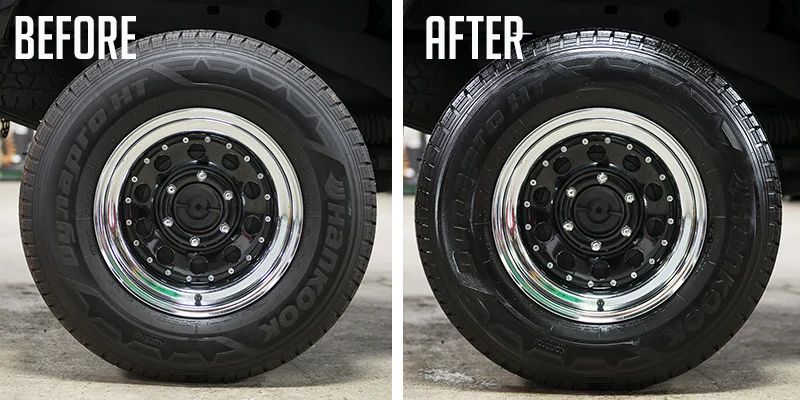
It comes in a spray form with its applicator pad and instruction guide to ensure a hassle-free process.
Benefits:
Turtle Wax T-10 Black Tire Coat
Check Prices
We earn a commission if you click this link and make a purchase at no additional cost to you.
Rainstorms or multiple car washing, this product is resilient to all. It not only makes the tire shiny but cleans away all the dirt and grime. It is available in spray or gel form with microfiber applicator pads or wipes; it is easy to use and cost-effective.
Benefits:
For people with a knack for doing everything from scratch, DIY hacks have been a lifesaver during this pandemic when going out for car detailing or tire blackening is unsafe.
Here are some easy DIY tire shine solutions for your cars!
1. Baby oil:Homemade baby oil is easy to prepare with zero harmful chemicals and will make your tires look glossy and your car as good as new. You can use it every week.
List of what’s needed:
Cleaning method:
Castor oil not only makes your hair shine but your tires too. When combined with alcohol, this DIY shine solution gives an excellent glossy look to the tire.
List of what’s needed:
Cleaning method:
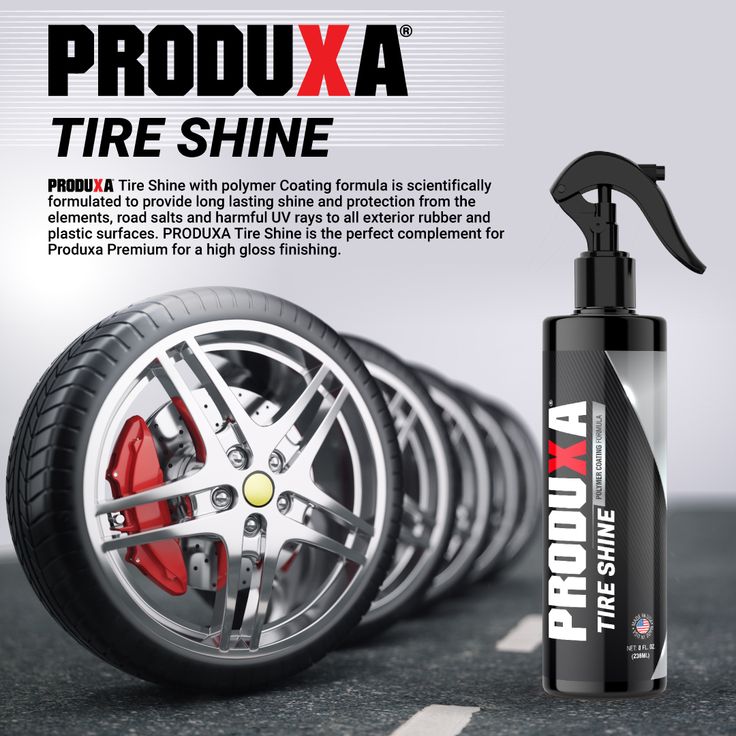 Lemon Oil:
Lemon Oil:Who doesn’t know the excellent benefits of lemon oil, but what you do not know is that you can prepare a homemade lemon oil tire shine with a few ingredients. It not only acts as an excellent tire shiner but works as a rubber conditioner and tire wax, too, protecting the tires against aging.
List of what’s needed:
Cleaning method:
Furniture polish is not only for your bed set. It can bring back the glossy appearance of the tires of your car, and we are not kidding. If out of stock, or when you do not want to visit the store in this pandemic to avoid human contact, preparing a homemade Pledge furniture polish is a lifesaver – or should I say a car saver?
If out of stock, or when you do not want to visit the store in this pandemic to avoid human contact, preparing a homemade Pledge furniture polish is a lifesaver – or should I say a car saver?
List of what’s needed:
Cleaning method:
Used as an effective cleaning agent, lubricant, and penetrative oil, WD40 can be used on the rubber (silicone) of the tires to make them appear clean, shiny, and glossy. It is safe and easy to use and acts as a lubricant for the tire, increasing its efficiency with smooth running on the roads.
Although people get skeptical about using WD40 as a tire shine, there is nothing to worry about.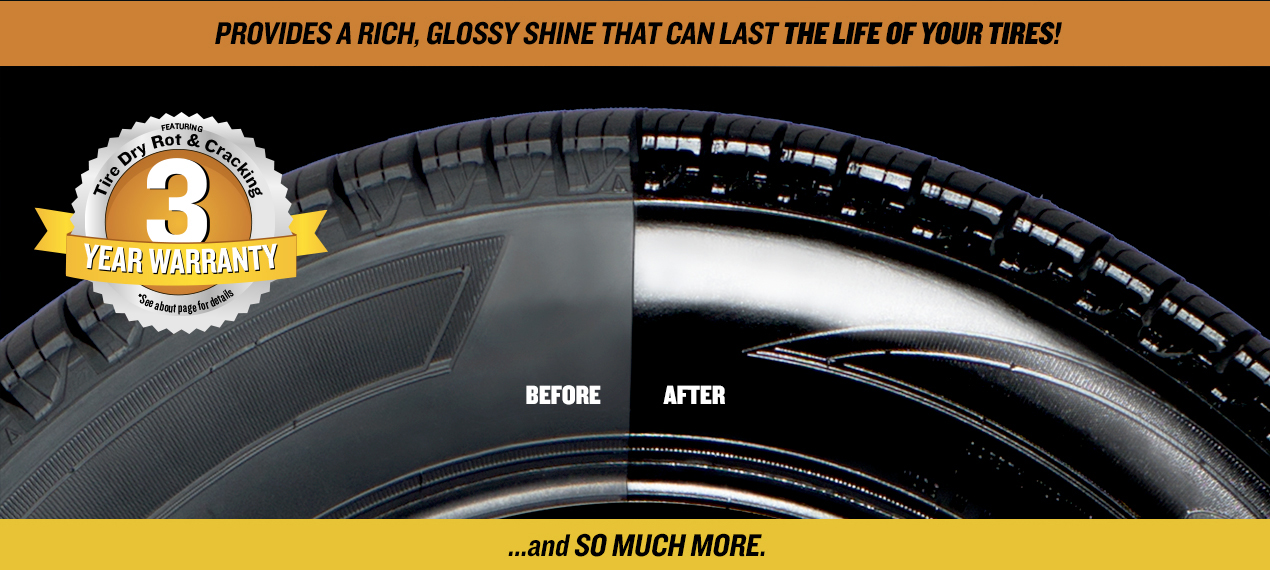 It can also be used to keep spark plugs at bay from corrosion. wd40 works effectively in removing the hard tar deposits on the rims of the wheels.
It can also be used to keep spark plugs at bay from corrosion. wd40 works effectively in removing the hard tar deposits on the rims of the wheels.
Summing it all up, making the tires black not only revives the car’s beauty but it makes its life longer and the driver safe on the roads. Bad tires can be dangerous, as they can lose their grip on the streets while sloppy sideways.
Tires are one of the most noticeable features of your car’s appearance. Your car says a lot about you, so let it reflect your best side.
Now that you have come to an end with us and have equipped your minds with the proper knowledge to roll up your sleeves, tires are waiting for your attention!
Make the tires black again, so next time you take your car on the road, you feel the drive!
0003 Over time, any rubber tarnishes, and due to the weather and careless driving, microcracks form on it. The appearance is starting to age, but cosmetic surgery can be done to rejuvenate the tires. Rubber blackeners can fill microdamages, restore deep blacks, and sometimes even factory shine. Many methods have a temporary effect: usually blackening lasts only until the first rains or a trip on a dusty road. But there are a couple of long-term players.
Rubber blackeners can fill microdamages, restore deep blacks, and sometimes even factory shine. Many methods have a temporary effect: usually blackening lasts only until the first rains or a trip on a dusty road. But there are a couple of long-term players.
You will need several bottles of glycerin, which the craftsmen suggest mixing with water (preferably distilled) in a ratio of 1 to 1 and pour into a spray bottle. Such a composition must be sprayed on the rubber and wait until it dries, otherwise the wet areas will collect dust and only get worse. This is one of the cheapest ways, but there are a couple of consequences. First, glycerin dries the rubber, that is, slightly accelerates its degradation. And secondly, the rubber quickly begins to look the same, so you need to blacken it in this way regularly.
Those who served in the auto companies tell stories of how they restored the color of the rubber of military equipment before the parades with the help of ordinary shoe polish.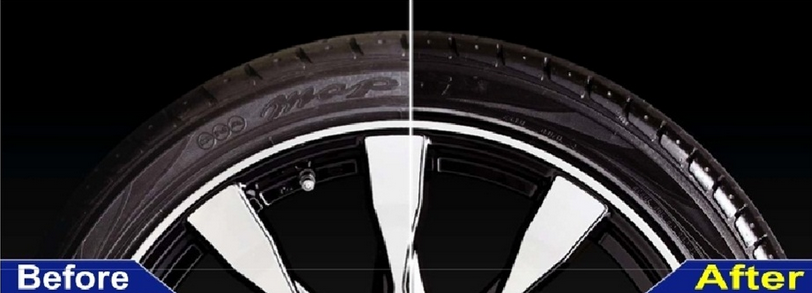 For the right effect, you need to wash the rubber from dirt and dust, let it dry, apply shoe polish (or any shoe polish) with a brush, let it dry. If the shoe polish is too dry, you can dilute it with a small amount of kerosene, but in this case, be careful with the paintwork discs - it may suffer.
For the right effect, you need to wash the rubber from dirt and dust, let it dry, apply shoe polish (or any shoe polish) with a brush, let it dry. If the shoe polish is too dry, you can dilute it with a small amount of kerosene, but in this case, be careful with the paintwork discs - it may suffer.
Despite the apparent logic and simplicity of this method, tire manufacturers do not recommend using it, because rubber dries faster due to shoe polish and cracks form on it.
Need to get some silicone grease. In another way, it is called polymethylsiloxane and PMS-200. This thick, gel-like liquid should be applied to the rubber with a brush or sponge and allowed to dry for at least half an hour. Then it will not attract dust and retain its shine. Polymethylsiloxane is a popular product among car enthusiasts, but the price tag for it can hardly be called budgetary, and not every car shop can get it.
If you don't want to rack your brains and play like a young chemist, the easiest way is to use the achievements of the auto chemical industry.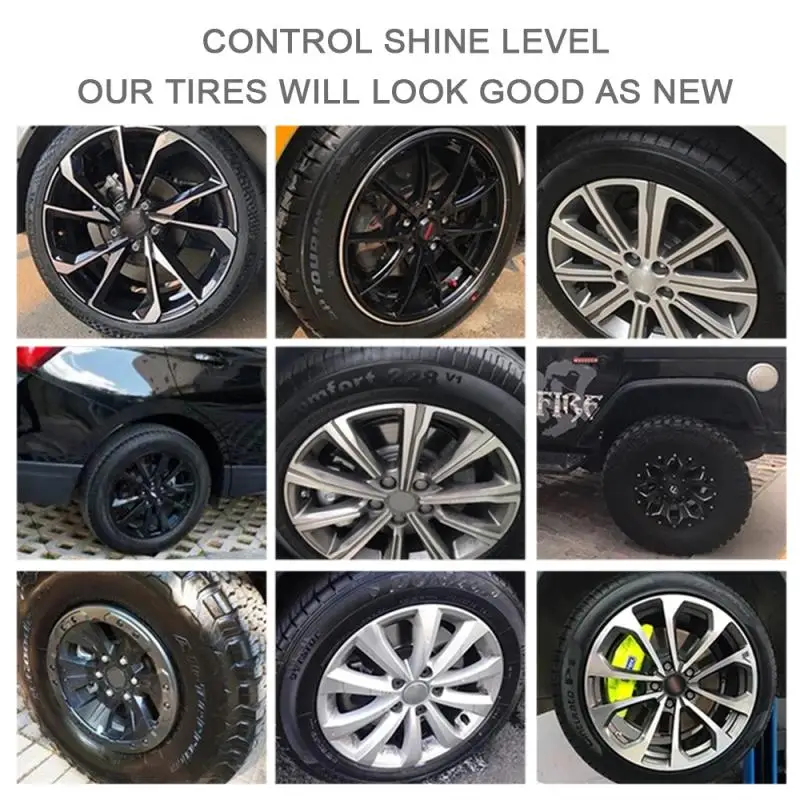 Now the market offers a wide selection of rubber blackeners for every taste and budget. Particularly high-quality compounds give a long-lasting effect and prevent dryness and cracking of rubber. Such inks are more difficult to remove from the rubber, which allows it to retain its shine longer. For example, ASTROhim's AC-2655 tire ink stays on the tire sidewall for up to a month even when driving in rain and puddles. It will be cheaper than silicone oils, and due to the fact that it is an aerosol, the composition is evenly distributed over the tire and you can not even get dirty when applied.
Now the market offers a wide selection of rubber blackeners for every taste and budget. Particularly high-quality compounds give a long-lasting effect and prevent dryness and cracking of rubber. Such inks are more difficult to remove from the rubber, which allows it to retain its shine longer. For example, ASTROhim's AC-2655 tire ink stays on the tire sidewall for up to a month even when driving in rain and puddles. It will be cheaper than silicone oils, and due to the fact that it is an aerosol, the composition is evenly distributed over the tire and you can not even get dirty when applied.
Experts recommend using such tire blackeners when preserving tires in winter storage. The film formed by the agent does not allow the rubber to dry out, and the shine is preserved until the next spring.
Our new video
Were export Zhiguli better than usual? Debunking the myth
Another GAZelle competitor: cheap! Even more!
Frame, four-wheel drive, transparent hood (and 224 mm under it) — the Chinese surprised again
Like this article? Subscribe and you will always be in the know!
Related materials
5 cool and inexpensive Chinese car ideas for autumn
You don't have to go to a car wash or a spare parts store to get your tires back to a deep black color.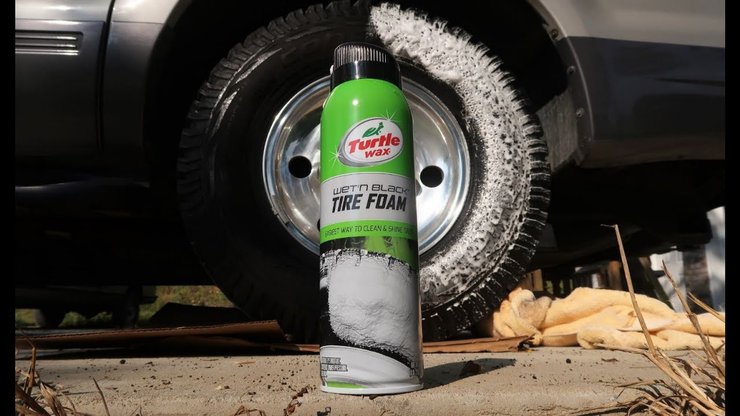 You can get by with improvised means, and some of them are sure to be found in almost every home.
You can get by with improvised means, and some of them are sure to be found in almost every home.
There are several ways to blacken tires that are safe and do not affect traction. In the absence of special means for restoring color, for example, shoe polish, glycerin, silicone oil, and even laundry soap and household chemicals are used. Each substance has its pros and cons, but it should be remembered that none of them fully possesses the qualities inherent in special solutions: neither long-term effect, nor protective properties, nor ease of use.
Related materials
11 factors that the driver needs to remember in the fall
Blackening tires with shoe polish or other shoe care product is the first thing that comes to mind. At the same time, the processing process itself is no different, only instead of a brush it is better to use a sponge so that splashes of shoe polish do not stain the body. We simply rub the sidewall of the washed and dried tire with shoe polish and let it dry.
To be honest, the result does not look very good, even when using the product with wax: there is neither shine nor color depth. The application process itself is also inconvenient - imagine what it would be like to process four wheels. The downside is that you have to wait for the shoe polish to dry completely before driving. Otherwise, road dust will quickly stick to the treated surface, reducing all the efforts made to nothing. Of course, there are also quick-drying paint creams, but their cost is such that it will still be cheaper to buy a special product for blackening tires.
Due to its consistency, glycerin creates a stunning jet-black shiny tire effect, and the degree of "greatness" can be adjusted by diluting the product with plain water. For one procedure, only one hundred grams of glycerin and the same amount of water are enough. We mix them, taking into account the fact that the less water in the composition, the more "fat" the effect will be.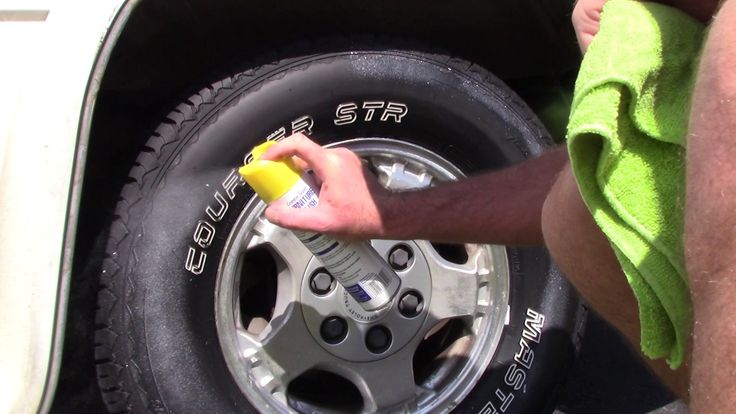 But it’s better not to spare water, otherwise dust will stick to the tires, as in the case of wet shoe polish. The composition is applied with a simple sponge without rubbing. By the way, unpainted black plastic body parts can also be processed with this composition.
But it’s better not to spare water, otherwise dust will stick to the tires, as in the case of wet shoe polish. The composition is applied with a simple sponge without rubbing. By the way, unpainted black plastic body parts can also be processed with this composition.
The advantage of this method is its low cost and the availability of glycerin in any pharmacy. The disadvantages overlap all the advantages: glycerin quickly ages rubber, causing it to crack. In addition, the composition is very well washed off with water - the very first rain or driving through a puddle will not leave a trace of glycerin. In dry weather, tires will only stay black for a couple of days.
Related materials
How to sit behind the wheel - check your fit
Blackening tires with silicone oil is not the cheapest way because it is not sold in small containers and you will have to buy an annual supply of funds right away. This method is the simplest, most efficient and less labor-intensive than the others.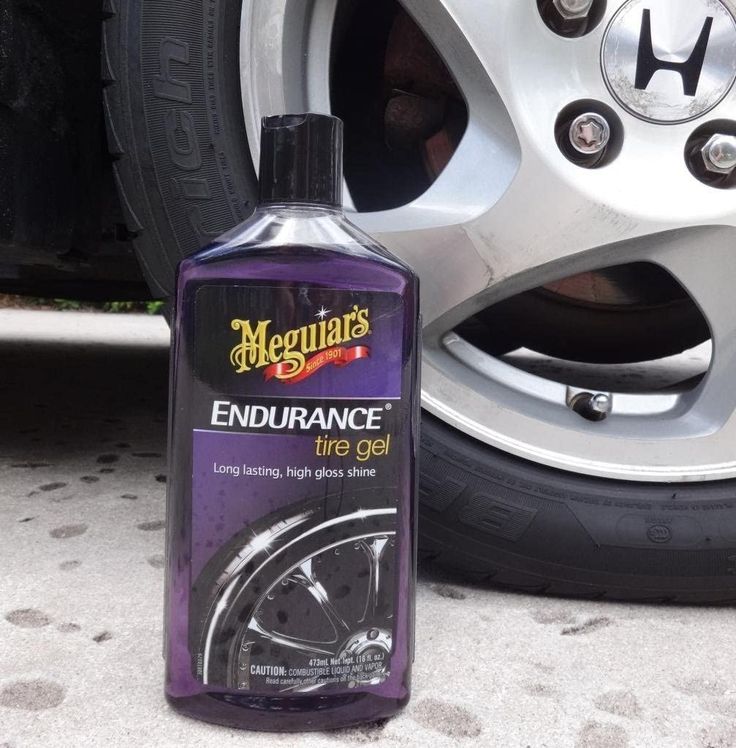 It is better to use medium viscosity oil, which will also come in handy for treating tires before winter or summer storage - this is the only substance described that somehow protects rubber from cracking, drying out, ultraviolet radiation and moisture.
It is better to use medium viscosity oil, which will also come in handy for treating tires before winter or summer storage - this is the only substance described that somehow protects rubber from cracking, drying out, ultraviolet radiation and moisture.
The effect after treatment with silicone oil is long-lasting and the tires look blacker than new. Silicone oil is also treated with door seals and trunk lids so that they do not freeze.
Laundry soap is perhaps the cheapest product suitable for blackening tires. It can be applied with a pre-soaped brush, or by dissolving a crumb of soap in water, apply the composition with a sponge. There is no need to rinse off the soap: when it dries, the rubber will acquire a beautiful and deep black tint. Like most artisanal methods, blackening tires with laundry soap has its drawbacks. Rubber because of it, as in the case of glycerin, ages faster and may begin to crack, so we do not recommend this method of blackening.
Related materials
Preparing the car for winter: what needs to be done first
Household chemicals are often used in car washes. This is a cheap, effective and harmless method for rubber and its adhesion to an expensive method, which can be offered as a bonus or "gift". It is mainly used for washing glasses, as well as dishes. The first is sprayed onto the sidewall of the tire and rubbed quickly, while the second is applied with a damp sponge. It is not necessary to wash off the compositions.
Also on the forums it is advised to blacken tires with drinks. More often than others, Coca-Cola is mentioned. But because of the sugar in the composition of the cola, it creates a sticky layer, on which dust quickly settles, and is easily washed off in the first puddle.
***
All of the listed products, of course, are inferior to the special compounds sold in auto chemical departments.